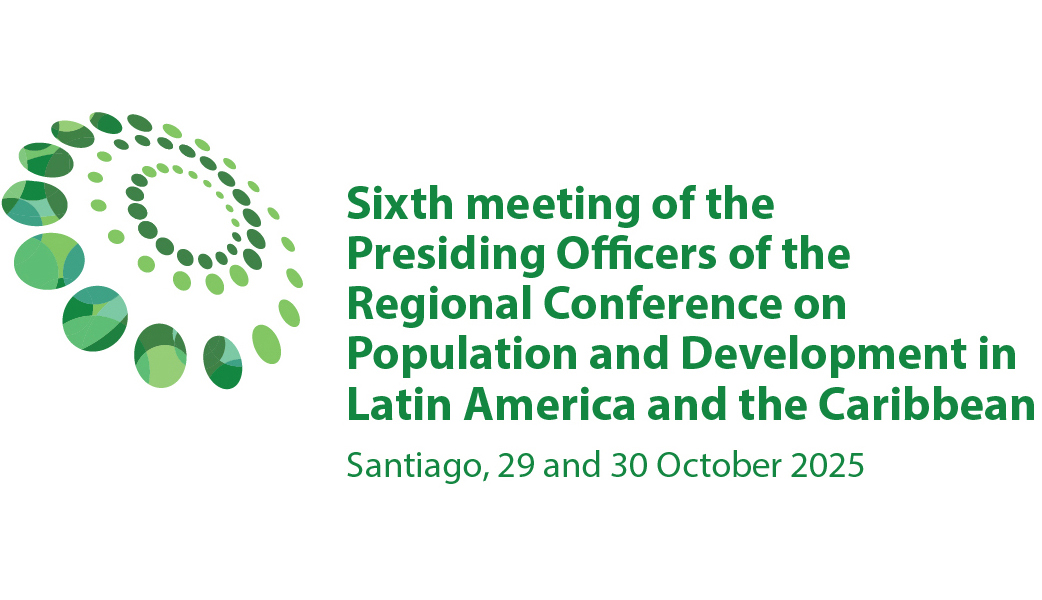Total Fertility Rate in Latin America and the Caribbean Reaches 1.8 Children per Woman in 2024, Deepening the Below-Replacement Fertility Trend
Work area(s)
ECLAC’s Demographic Observatory 2025 analyzes the region’s historical and recent trends in fertility, with special emphasis on its decline, and examines the public policy challenges posed by this new scenario.

In 2024, the total fertility rate in Latin America and the Caribbean reached 1.8 children per woman, remaining below replacement level (2.1 children per woman) since 2015. In 2024, 76% of the region’s countries and territories recorded rates below that level, which is the threshold needed to keep the population stable in the absence of migration, according to the Demographic Observatory 2025 – Low Fertility in Latin America and the Caribbean: Emerging Trends and Dynamics, which was released today by the Economic Commission for Latin America and the Caribbean (ECLAC).
The document – prepared by the Latin American and Caribbean Demographic Centre (CELADE)-Population Division of ECLAC – shows that in Latin American and Caribbean countries and territories, fertility rates ranged from 0.94 to 3.3 children per woman in 2024. In Latin America, Chile (1.14), Costa Rica (1.32), Uruguay (1.40) and Argentina (1.50) have the lowest rates, while in Caribbean countries and territories the lowest rates can be found in Puerto Rico (0.94), the British Virgin Islands (1.05) and Curaçao (1.07).
The publication emphasizes that the transition to low fertility levels in Latin America and the Caribbean occurred precipitously from the second half of the 20th century onward in all the region’s countries, in a relatively short period compared with other regions of the world.
This rapid drop in fertility reflects a combination of factors, including the decline in child mortality, broader access to education (especially for women), increased female participation in the labor market, widespread access to modern contraceptive methods, and progress towards greater gender equality. These factors have changed reproductive preferences, have expanded the possibilities for regulating fertility, and have facilitated the postponement of childbearing.
Currently, Latin America and the Caribbean is at an advanced stage of demographic transition, marked by ever-lower fertility and significant changes in reproductive calendars. The average age of fertility showed a downward trend from 1950, when it was 29 years of age, until it reached a low of 26.9 years in 2010. Since then, the average age of fertility has gradually increased, reaching 27.6 years in 2024.
The recent decline in fertility in the region’s countries can also be attributed to the sharp drop in adolescent fertility in the last decade. This figure fell from 69.9 live births for every 1,000 women ages 15 to 19 in 2014, to 50.3 per 1,000 such women in 2024 – which marks a 38.8% decrease. The most significant gains in this period were seen in Argentina, Chile, Costa Rica, the Dominican Republic, Panama and Uruguay.
This decline is closely tied to strengthened strategies and policies for preventing adolescent pregnancy, which is a noteworthy achievement since the region did not show signs of a sustained reduction in adolescent fertility until the start of the 2010s. Furthermore, adolescent fertility rates were above expected levels given the region’s overall fertility rates and human development indicators.
Nonetheless, adolescent fertility rates in Latin America and the Caribbean remain among the highest in the world, which reflects ongoing structural inequalities and gaps in access to sexual and reproductive health services.
In other regions of the world, especially in Europe, the period fertility rate fell in the 1990s to below 1.3 children per woman, rebounding some 15 years later to levels of around 1.5 children per woman. For that reason, to project the future trajectory of the total fertility rate and its impact on population size and structure, it is important to also take into account the behavior of cohort fertility, meaning the average total number of children (live births) that a woman has throughout her lifetime.
The Demographic Observatory 2025, based on various sources, also analyzes the main regional and socioeconomic inequalities linked to reproductive behavior and the factors accounting for the changes seen.
In this regard, in the lower-income quintiles, observed fertility exceeds the ideal number of children that women say they want on average, while in the higher-income quintiles, observed fertility is below the ideal number of children, which is seen reflecting gaps in the exercise of sexual and reproductive rights, as well as in balancing productive and reproductive life and in accessing housing and care services, among other aspects. That is why the document also addresses the challenges posed by this new scenario from a public policy perspective, examining the family programs and policies implemented in contexts of low fertility and their associated effects.
The publication urges for ensuring that people can exercise their right to freely and responsibly decide how many children they wish to have, in alignment with their educational, professional and personal aspirations. To achieve this, comprehensive policies are needed that would advance gender equality, expand the availability and quality of care services, eliminate workplace motherhood penalty, and ensure universal coverage of sexual and reproductive health services.
Related event
Related content
Contact
Public Information Unit
- prensa@cepal.org
- (56 2) 2210 2040

